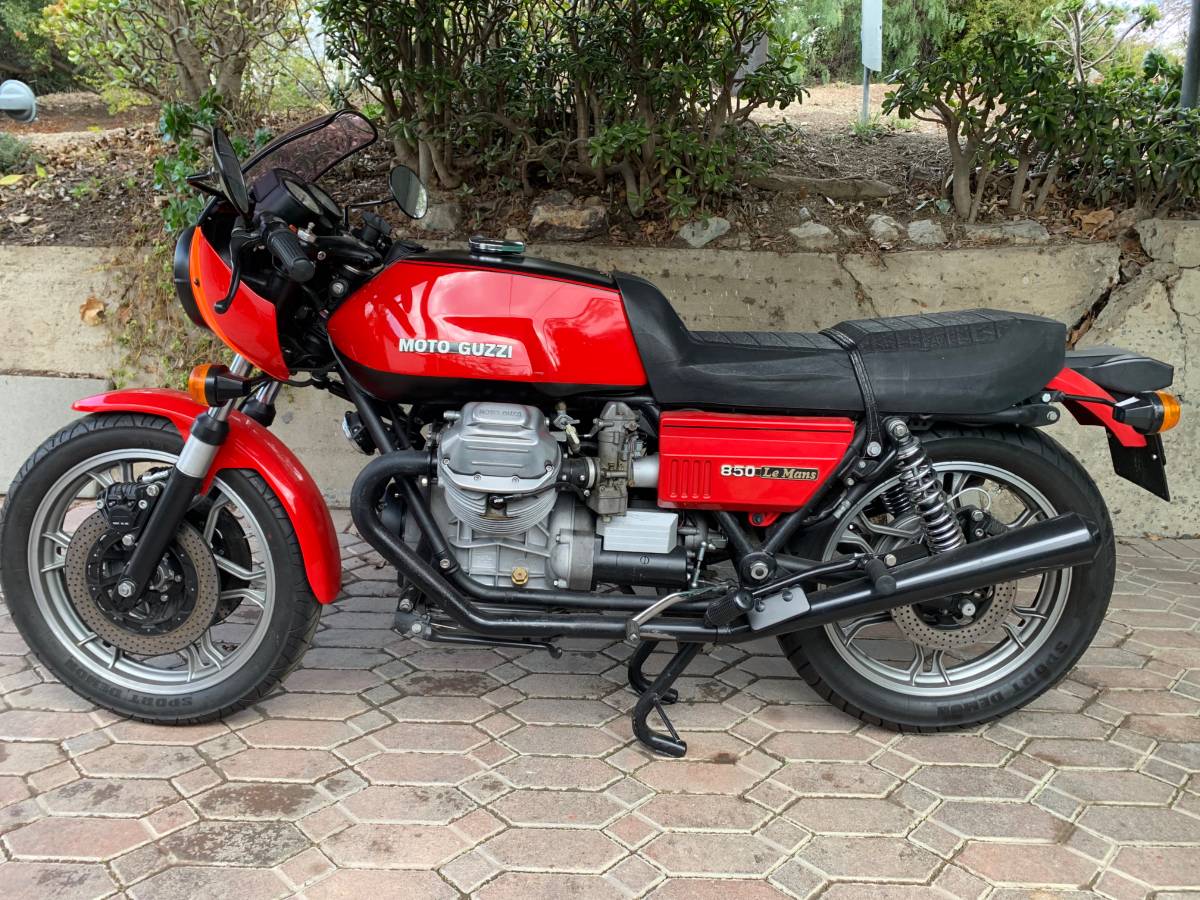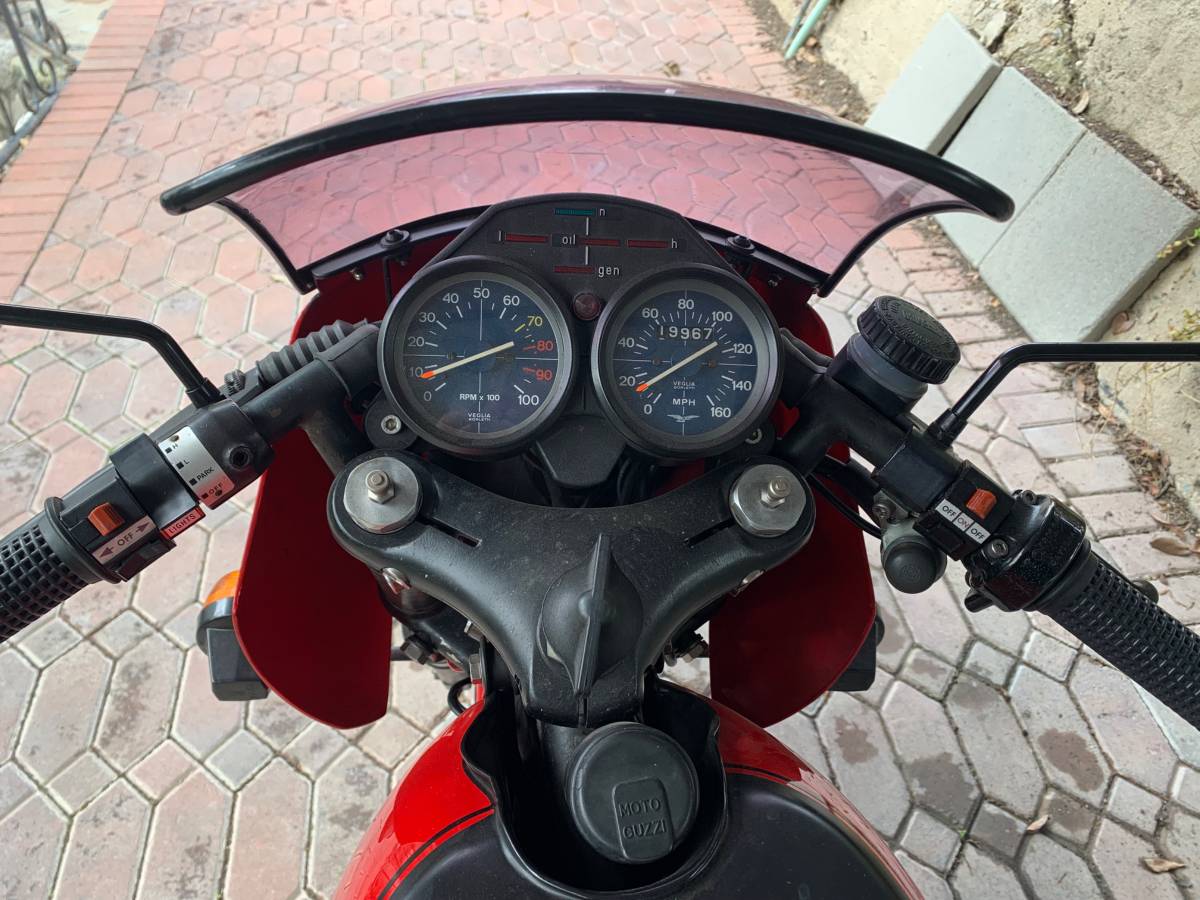
1978 Moto Guzzi 850 Le Mans
Miles: 20,000
Listed Price: $13,500
Clean California Title
Moto Guzzi’s follow up to their successful V7 Sport was introduced in 1976 and known as the 850 Le Mans. It was based around the same Lino Tonti-designed frame that was used in the V7 and allowed that bike to have such a low, lean silhouette, but the longitudinally-mounted v-twin engine was punched out to 844cc and fitted with high-compression pistons to produce a claimed 81hp and a 130mph top speed, while heavily revised styling made the bike look much more modern. Stopping was achieved via an interesting mechanical linked-braking system that saw one front caliper activated by the handlebar lever, with the other front and the rear calipers operated by the foot pedal, with balance between the two modulated by a proportioning valve. Then and now, it sounds like sacrilege to serious bikers, but function was excellent and the system was common on sporting Guzzis for years to come. The engine orientation and shaft drive of the Le Mans might sound more “touring” than “sport,” but the seemingly humble specifications resulted in a very competent sportbike, even compared to something like Ducati’s 900SS of the period.

1978 Moto Guzzi 850 Le Mans. Runs great. Clean California title in my name.
That’s about as basic a listing as you can get. As always, I really do wish the seller would include just a bit more information but, that being said, the photos are of reasonably high quality, and the bike really does look nice. Plus, with only 20,000 miles on the odometer, what could go wrong? Italian reliability jokes aside, it’s a Moto Guzzi after all, and 20,000 miles is generally considered to be barely broken in. The $13,500 asking price seems right on the money for a nice first-generation bike and, considering the relatively wild prices that some classic Italian bikes demand these days, the original Le Mans represents pretty amazing value for such a capable and striking machine.
-tad










I have always wondered, when it comes to performance, why aren’t had steel brake lines used on bikes. Flexible braided lines aid serviceability. But to my mind a solid line would be hard to beat. Interesting to see that on the back brake here. Wonder if that is a component of the linked brakes. I see a flexible line on the front. Peaks my interest into the why of the design here.
Yeah, now that I look, that is interesting: a bit of hard-line combined with a bit of flexible line further forward. I’m riding with a guy tomorrow who has a Le Mans, so I’ll try to take some pics. I’ve noticed on older bikes that they like to use sections of hard-line where possible, combined with sections of rubber tubing to allow for necessary suspension travel. If I remember correctly, the Japanese used pretty basic rubber lines for a really long time, even on relatively high-performance motorcycles. Always seemed like a bad place to cut costs to me.